The week at a glance
- Bufflehead still in Dorset
- Pacific Diver still in County Clare
- Pied-billed Grebe still in County Clare
- Wintering Black Kite still in Powys
The sun shone, the temperatures climbed out of single figures for the first time in an age, the birds were singing, the hares were boxing, the daffs were in bloom — goodness gracious me, it seemed as though spring really was on its way. But despite the reasonably sunny outlook, it was still "winter" stars that led the way for another week (perhaps unsurprisingly given the date). In pole position was the popular drake Bufflehead in Dorset, still showing to anyone who cared to head to The Fleet. Sometimes distant, sometimes not, this super little bird remained throughout the week.

Bufflehead, West Bexington, Dorset (Photo: David Campbell)
Over in Ireland, after several days of negative news (or no-one looking), the adult Pacific Diver was again off Finvarra Point (Co. Clare) on 13th–17th, while the same county's Pied-billed Grebe, on Lough Atedaun, was still in place to 12th at least. Another snippet of Irish news was resolved this week — the Fan-tailed Warbler (or Zitting Cisticola if you prefer such horrid names) that was alleged to have been photographed in Wicklow was, as many suspected, snapped in rather sunnier climes (a Greek lagoon, in April 2009 to be precise). Good job the snap of a Cetti's Warbler was included with the original posting — two mega Mediterranean warblers on the Irish east coast in early March really was pushing the boundaries of belief. Anyway, case closed — one of those things.

Pacific Diver, Finvarra Point, Clare (Photo: Tom Shevlin)
Back to reality, and the wintering Black Kite at Gigrin Farm (Powys) continued to oblige to 14th at least. Its going to be fascinating to see what this bird does as the avian sap begins to rise — where will it go, or will it decide that Wales and his/her Red Kite buddies are too nice to leave?

Black Kite, Gigrin Farm, Powys (Photo: Bill Plumb)
A White-billed Diver was found at Melvaig (Highland) on 16th. It's been a poor winter for this always-exciting High Arctic wanderer — hopefully it won't be too long until the regular spring passage begins off the Outer Hebrides. In Cumbria, a Little Auk was seen off Sellafield, also on 16th.
As a new breeding season beckons, the focus falls on Glossy Ibis, three of which continued to reside around the Somerset Levels for another week, as did, almost inevitably now, a Great White Egret, which was joined by two more on 17th (all three birds at Meare Heath). Singles were seen in Gwent, London (two sightings several miles apart), Gloucestershire, Kent, Cambridgeshire, Norfolk, Nottinghamshire, Derbyshire and Lancashire during the week and two were at Orford Ness (Suffolk) on 14th. Two Cattle Egrets were at St. Clement (Cornwall) on 13th, with two more still around Sennen on 16th–17th. Three were to be found in that heron hotbed, Somerset: two at Shapwick Heath on 15th, with another still hanging out at Sharpham Park to 14th at least.
It goes without saying that the home of cider also hosted a couple of Spoonbills as well: two were present at Greylake on 13th–14th, with at least a dozen others dotted around the southwest (from Cornwall to Dorset). Four birds were in County Cork and singles were seen in Kent, Suffolk and Cheshire. Single Common Cranes were noted over Swinton (Greater Manchester) on 12th, at Alkborough Flats (Lincolnshire) on 13th, the Bure Valley (Norfolk) on 14th, Landguard Point (Suffolk) on 15th and North Cave (East Yorkshire) on 16th. Two birds were seen in the Norfolk Broads, at Winterton, also on 14th.
The party of three (two blue, one white) Snow Geese resurfaced in Highland this week, appearing at Nigg Bay on 11th. The single white Snow was still at Craobh Haven (Argyll) to 13th, while in Lancashire the long-standing quartet at Leighton Moss was reduced to a new-look trio this week, still there to 16th.
Two Richardson's Canada Geese and the single (presumed) Atlantic Canada Goose were still at Ballintemple (Co. Sligo) to 15th and off-island Richardson's in Scotland (both in Argyll) were on Islay on 14th and Tiree on 15th. Lesser Canada Goose records came from Malin Head and Trawbega Bay (both in Donegal) and also over at Moira (Co. Down). After a couple of high-scoring weeks, the number of Black Brants fell away to just four birds, singles in Dorset, Essex, Norfolk and Mayo.
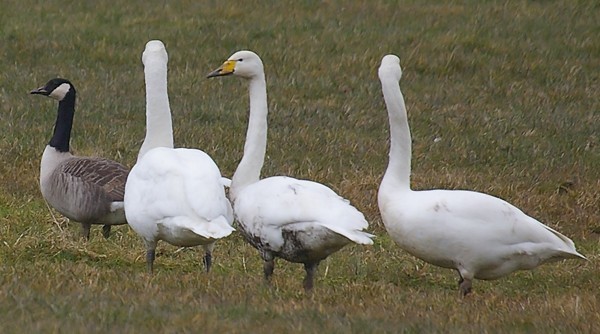
Lesser Canada Goose, Moira, Down (Photo: Derek Charles)
Drake Lesser Scaup were still being seen in Cornwall (at Dozmary Pool), Glamorgan (at Cosmeston Lakes CP) and Clyde (at Hogganfield Loch) during the week and females were still at Eglwys Nunydd Reservoir, also in Glamorgan and at La Grande Mare (Guernsey). In Somerset, both the first-winter drake Lesser Scaup and the adult drake Ferruginous Duck were seen on 17th.
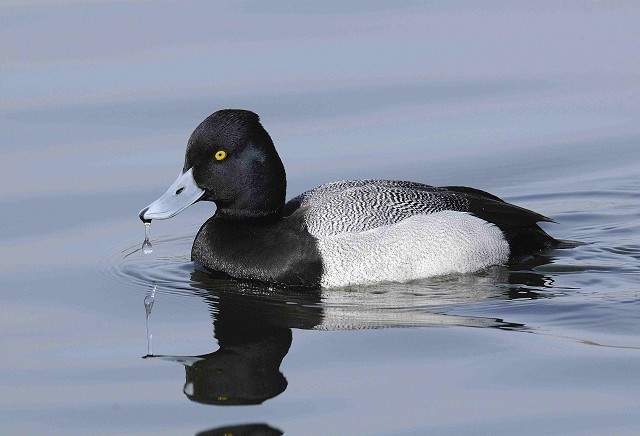
Lesser Scaup, Cosmeston Lakes CP, Glamorgan (Photo: Mick Colquhoun)
"New" drake Ring-necked Ducks were at Lough Gara (Co. Sligo) on 11th and Kilkee (Co. Clare) and Ballyshunnock Reservoir (Co. Waterford) on 14th, but, those three aside, it was as you were from previous weeks. Further males were still in Devon, Buckinghamshire, West Yorkshire (again moving between sites), Cleveland and Donegal, with one reappearing in Lancashire (after six weeks away), while females continued to hang out in Gloucestershire, Carmarthenshire and Orkney.

Ring-necked Duck, Inch Island Lake, Donegal (Photo: Derek Charles)
Last week's two drake American Wigeon were this week's two American Wigeon, still being seen at Caerlaverock (Dumfries & Galloway) and Martin Mere (Lancashire). For much of the week, the only Green-winged Teal reported were all in Ireland: one at Cross Lough, the Mullet (Co. Mayo) on 12th, two singles in County Clare, both on 13th (at Shannon Airport Lagoons and Tulla) with another on Bull Island (Co. Dublin) on the same day. The exceptions came on 14th, when single birds were at Alkborough Flats (Lincolnshire) and Kildrochat (Dumfries & Galloway) (presumably the same drake seen here, off and on, throughout the winter). A third for County Clare was found at Burren Lake on 17th.

American Wigeon, Martin Mere WWT, Lancashire (Photo: Mark Saunders)
Three drake Surf Scoters continued to be seen between Old Conwy and Pensarn off the coast of North Wales this week, another drake remained off Ruddon's Point and nearby Kincraig Point (Fife) and the wintering female was still at Dawlish Warren (Devon). Both Hooded Mergansers (in Cleveland and Dorset) were seen this week, both never going to trouble the official BBRC scorers.
At least one Rough-legged Buzzard remained at Thorpe and Chedgrave marshes (Norfolk) to 15th (and one flew over nearby Fritton on 15th), with further singles at Pymoor (Cambridgeshire) and, again, near Newton (Lincolnshire), both on 13th. On 15th, lone birds were seen at Murton (Northumberland) and Selkirk (Borders). On the Isle of Wight, a Golden Eagle was seen and photographed on 11th–14th (but is thought to be a known escape), while another was snapped near Bryncrug (Gwynedd) on 13th.
A male Snowy Owl was again on Lewis (Outer Hebrides) from 11th–15th and a female was again on Lihou (Guernsey) on 14th–15th. A third bird was seen at Knockalee (Co. Galway) on 15th and had reportedly been present since mid-February.

Snowy Owl, Lihou, Guernsey (Photo: Chris Bale)
In Lancashire, the Long-billed Dowitcher was still at Bank's Marsh to 12th and was the only shorebird of note this week.
A possible Mew Gull seen at Albert Village (Leicestershire) on 11th–17th was the cause of some discussion and interest (having initially appeared a week or so beforehand). It did appear to show many features associated with the American form but, arguably, it's nothing that's not been shown by one or two other candidates in the UK in the past (one at Southwold, Suffolk in the early 1990s for instance) and, in all honesty, the features it exhibits can be shown, occasionally, by regular canus and heinei Common Gulls. And frequent checks of passage Common Gulls, as is the case at the moment, will yield a few birds as slim and slender as this. A younger bird or even an adult are favoured by some gullers as the best options for the North American form to ever stand a chance with the national record committees. That's not to say that this individual should just be forgotten about though. It may well be a Mew Gull — and the same bird was seen in the evening roost at Foremark Reservoir (Derbyshire) on 13th and 16th.
Another US visitor in waiting was the immature (a second- or third-winter bird) gull at Cefn Sidan Sands (Carmarthenshire) that was reported for several days as a possible American Herring Gull.
The total of Ring-billed Gulls dropped slightly this week to some 18 birds. Eleven of those were in Ireland: there were three for Antrim — including a first-winter at Belfast Lough — at least three for Cork (two adults and a first-winter at Cuskinny on 17th, two for Galway and two for Limerick — another new first-winter — and one each for Clare, Dublin and Waterford), while English singles were still in Cornwall, Hampshire, Essex and Lancashire.
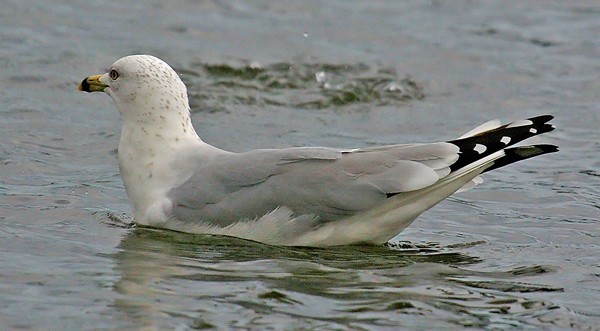
Ring-billed Gull, Carrickfergus, Antrim (Photo: Derek Charles)
The adult Bonaparte's Gulls seen last week in Wales and Scotland were both still present in Cardiff (Glamorgan) and Thurso (Highland) on 11th, with the River Taff bird still around to 12th and again on 17th. A Laughing Gull (age unknown) was reported from Porthcawl (Glamorgan) on 13th, but further information is scant.
A total of 17 Iceland Gulls and 18 or so Glaucous Gulls were noted (including two youngsters of the latter species together at Beddington SF (London) on 11th–13th, two off Spurn, in East Yorkshire, on 15th and a further duo at Mutton Island in Galway on 17th). Caspian Gulls also wriggled into double figures (comfortably as its turns out), helped by three first-winters at Pitsea (Essex) on 13th. Two birds (including a colour-ringed first-winter) were at Richmond Bank (Cheshire) during the week and two birds were together at Pegwell Bay (Kent) on 11th.
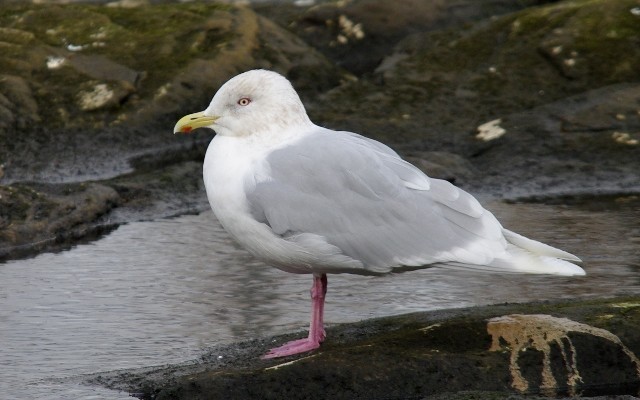
Iceland Gull, Ayr, Ayrshire (Photo: Gavin Chambers)
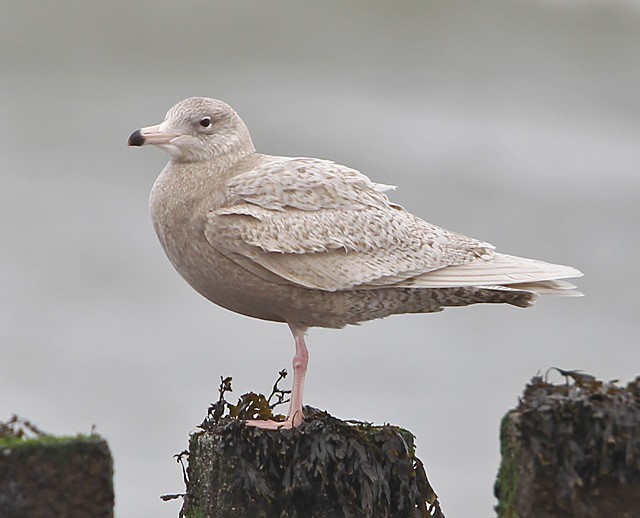
Glaucous Gull, Sheringham, Norfolk (Photo: Chris Upson)
The adult Forster's Tern was still around Nimmo's Pier (Co. Galway) to 16th.
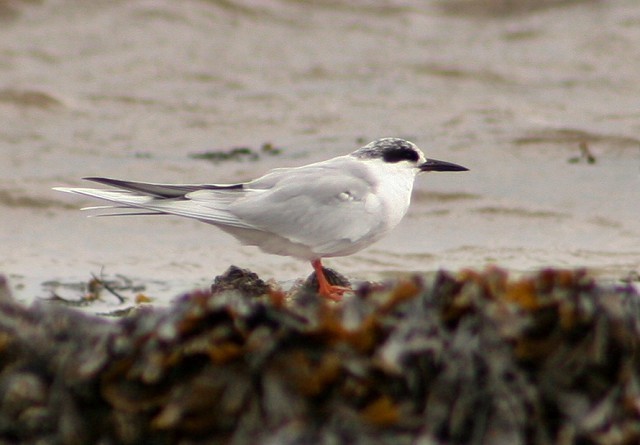
Forster's Tern, Nimmo's Pier, Galway (Photo: Jeffcop)
A Black-bellied Dipper was seen at Bridge of Fitch (Shetland) on 13th, while flocks of Waxwings included the largest of the winter so far: 54 in Aberdeen on 14th, with 12 in Cottingham (East Yorkshire) and 20 over the London Wetlands Centre on 14th. On Guernsey, the Richard's Pipit remained at Pulias Headland to 17th while a splash of colour was brought to Dorset by the Hoopoe seen on Portland on 17th.

Richard's Pipit, Pulias Headland, Guernsey (Photo: Chris Bale)

Waxwing, Leeds, West Yorkshire (Photo: Darren Ward)
Not too many Great Grey Shrikes have departed yet: at least 11 were still present this week. Three birds were still dotted around Wales — at the Welsh Wildlife Centre/Teifi Marshes (Pembrokeshire), Usk Reservoir (Powys), Clocaenog Forest and Fenn's Moss (Clwyd) — while others remained at Bellever Tor (Devon), Burley (Hampshire), Bircher Common (Herefordshire), Welbourn (Lincolnshire), Langdale Forest (North Yorkshire), Waddington Fell (Lancashire) and Dalton Crags (Cumbria).

Great Grey Shrike, Burley, Hampshire (Photo: Ken Arber)
A flock of four Penduline Tits was discovered in the extensive reedbeds at Minsmere (Suffolk) on 16th (still present the following day) and another was seen again around Rainham Marshes (London) on 13th–15th. The two wintering Little Buntings remained at Sconner (Cornwall) and Dunnet Bay (Highland) throughout the week.

Penduline Tit, Minsmere RSPB, Suffolk (Photo: Scott Mayson)
Photo of the Week

Common Kestrel, Otmoor RSPB, Oxfordshire (Photo:
Nigel Forrow)
Nigel Forrow's photographs will be familiar to BirdGuides regulars. Nigel has uploaded some great images from his global travels, including a comprehensive collection of images from his recent trip to South Africa. This week, Nigel has finally bagged a Photo of the Week with a shot of a common species close to home. Making excellent use of the latest camera gear, Nigel captured a stunning image of a distant male Kestrel (you don't see many flight shots taken with a focal length of 1200mm!). Freezing the bird as it banked steeply, Nigel managed to record its underside in such crisp detail that you feel you could touch it. A dynamic angle and pleasing colours and tones, with an unusual graduated background, finish off a well-rounded image.

Short-eared Owl, undisclosed site, Worcestershire (Photo:
Mark Hancox)

Jay, North Wirral, Cheshire (Photo:
Richard Steel)

Common Redshank, Point of Ayr, Clwyd (Photo:
Steve Round)

Isabelline Shrike, Qatar (Photo:
Dileep Kumar)
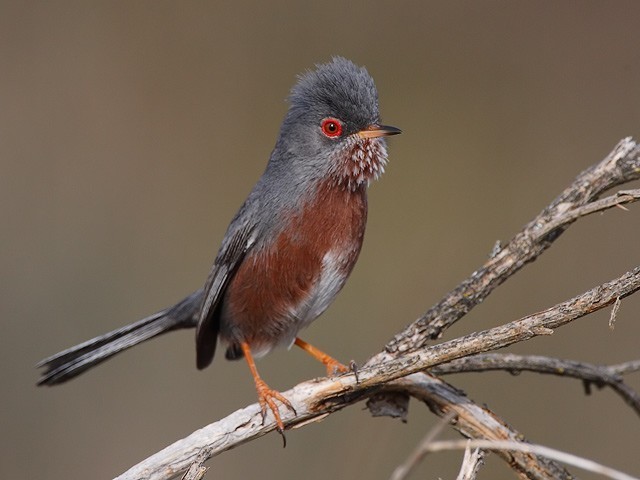
Dartford Warbler, Spain (Photo:
Steve Fletcher)

Hoopoe, United Arab Emirates (Photo:
Artur)

Little Owl, Whetstone, Leicestershire and Rutland (Photo:
Paul Riddle)

Crested Tit, undisclosed site, Highland (Photo:
Pauline Greenhalgh)

Chaffinch, West Hythe, Kent (Photo:
Brian Harper)
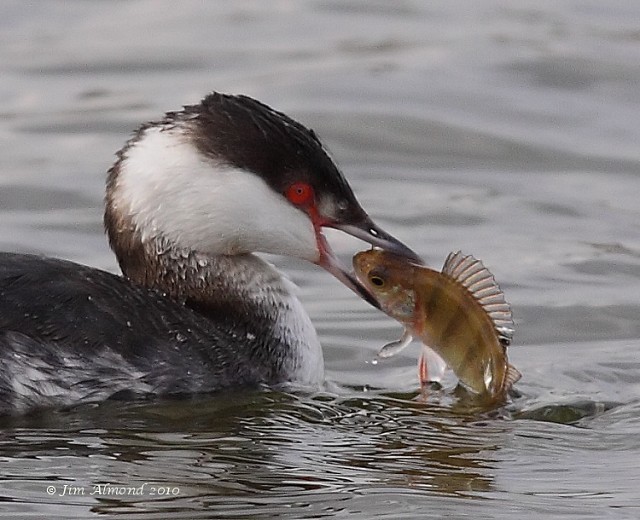
Slavonian Grebe, Grimley, Worcestershire (Photo:
Jim Almond)

Merlin, Uyeasound, Unst, Shetland (Photo:
Robbie Brookes)
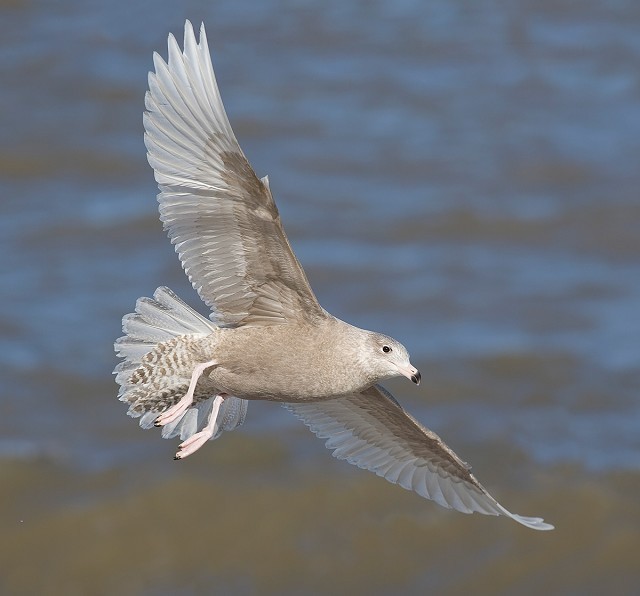
Glaucous Gull, Sheringham, Norfolk (Photo:
Kevin Du Rose)

Pheasant, Leighton Moss RSPB, Lancashire (Photo:
Jackie Moreton)

Cormorant, undisclosed site, Lancashire (Photo:
Tom Charles)

Skylark, Kinmel Bay, Conwy (Photo:
Robert Askew)

Spotted Redshank, Morston, Norfolk (Photo:
Garth Peacock)

Lesser Redpoll, Chamber's Farm Wood NR, Lincolnshire (Photo:
Matt Latham)

Black Redstart, Aberystwyth, Ceredigion (Photo:
Kev Joynes)

Common Kingfisher, Mere Sands Wood LWT, Lancashire (Photo:
Cliff)

